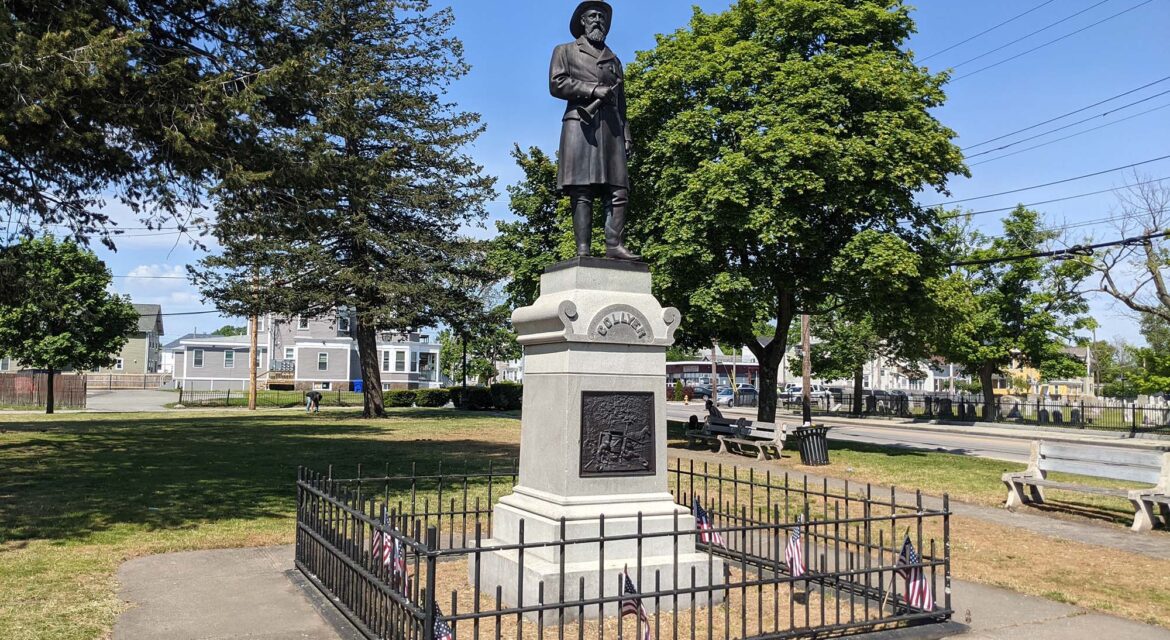 Located at the entrance of the Woodland Neighborhood in Pawtucket, Rhode Island, the Collyer Monument is dedicated to firefighters who helped to define the early city and community. By representing a multitude of history, people and interests, the monument has come to define the identity of the space it resides in as well as the surrounding community.
Located at the entrance of the Woodland Neighborhood in Pawtucket, Rhode Island, the Collyer Monument is dedicated to firefighters who helped to define the early city and community. By representing a multitude of history, people and interests, the monument has come to define the identity of the space it resides in as well as the surrounding community.

History and Connection
 Built in 1890 by the sculptor Charles Parker Dowler to honor Samuel Smith Collyer, the Collyer Monument is directly connected to a significant element of the history of the city. Born in Pawtucket in 1832, Collyer was a member of the Town Council of North Providence, but was also involved with the fire departments of North Providence and Pawtucket. He would eventually become Pawtucket Fire Chief.
Built in 1890 by the sculptor Charles Parker Dowler to honor Samuel Smith Collyer, the Collyer Monument is directly connected to a significant element of the history of the city. Born in Pawtucket in 1832, Collyer was a member of the Town Council of North Providence, but was also involved with the fire departments of North Providence and Pawtucket. He would eventually become Pawtucket Fire Chief.
In July 1884, Collyer was one of six firemen that were injured when the carriage they were riding tipped over. Responding to a fire alarm, Collyer was on the reel of the carriage and suffered the worst injuries, and he would be the only one who died from the accident. His funeral service and procession was said to be one of the most elaborate in the town’s history.
To honor his service and memory, the citizens of Pawtucket erected the Collyer Monument in 1890. Collyer is depicted in full firefighter’s uniform with a trumpet in hand, while a bronze plaque depicts the scene of the accident that claimed his life. His name is inscribed in an arch on the upper portion of the statue’s base. The granite base contains the inscription commemorating Collyer and the other firefighters who were injured.
By honoring the history of the city in such an evident manner, the monument has been able to cultivate a powerful sense of identity for the entire Woodlawn Neighborhood. It also illustrates what it can look like for a monument to define the connection to a legacy that connects the past to the present for the benefit of an entire community.

Celebrating a Legacy
 Added to the National Register of Historic Places in 1983, the Collyer Monument has come to define the Woodlawn Neighborhood in the present. It illustrates the impact that monuments can make when it comes to providing an identity for spaces that would otherwise be empty or ordinary in a way that will resonate into the future.
Added to the National Register of Historic Places in 1983, the Collyer Monument has come to define the Woodlawn Neighborhood in the present. It illustrates the impact that monuments can make when it comes to providing an identity for spaces that would otherwise be empty or ordinary in a way that will resonate into the future.

